As a history buff, I love exploring the world’s cultural gems. Places like Russia’s grand palaces or the mystery of Machu Picchu fascinate me. The guides I find will lead me through history, showing hidden spots and famous places in vivid detail. Whether it’s the beauty of the Sistine Chapel or the eerie Easter Island statues, I know this journey will feed my love for history.
Key Takeaways
- Discover the world’s most captivating cultural destinations for history buffs
- Explore hidden gems and iconic landmarks that bring the past to life
- Immerse yourself in the rich tapestry of human civilization
- Ignite your passion for history and embark on a transformative cultural odyssey
- Curated guides for cultural heritage, travel narratives, and archival discoveries
The Allure of St. Petersburg, Russia
Calling myself a history buff, I’m drawn to the rich history of Russian nobility. I get caught up in the stories while visiting St. Petersburg. This city, founded by Tsar Peter the Great in 1703, was once Russia’s capital for two hundred years.
Today, it flourishes as a cultural center. It’s a vibrant metropolis filled with centuries-old charm.
The Hermitage Museum and Winter Palace
In the heart of the city is the Hermitage Museum, housed in the Winter Palace where the Tsars once lived. It’s a vast collection of art, including works by Da Vinci, Raphael, and Rembrandt. The museum is not just about art. Its building shows off Russia’s imperial past with its grand architecture.
Peterhof: The Russian Versailles
Not far from the city, Peterhof Palace is known as the “Russian Versailles.” It gives a peek into the Romanovs’ luxurious lives. The palace has stunning gardens with grand fountains.
Visitors get to see the Tsarist era’s extravagance. With its beauty and history, Peterhof is a top place to visit in St. Petersburg.
St. Petersburg is a delight for cultural travelers. It has the famous Hermitage, beautiful Peterhof, and more. As a lover of history, the city always manages to amaze me with its historical charm.
Machu Picchu: The Enigmatic Incan Citadel
High in the Andes Mountains above the Urubamba River valley sits Machu Picchu. It’s a symbol of Incan civilization’s skill in architecture and engineering. You can get there by hiking the famous Inca Trail or take a day trip from Cusco. The massive stone buildings and the surrounding natural beauty draw people from all over the world.
In 1983, Machu Picchu became a UNESCO World Heritage site. It stands at about 2,430 meters (7,970 feet) above sea level. The site includes over 150 buildings like houses, baths, temples, and more. They give us a peek into the amazing world of the Incan civilization. It was probably left behind because of the Spanish Conquest and disease. Now, it’s a key place for people who love history and adventure to visit.
The best time to visit is during the dry season, from May to September. But it’s less crowded from November to March in the wet season. Machu Picchu is loved by history enthusiasts, archaeology buffs, and those who love nature. It’s the most visited site in South America, with about one million visitors every year.
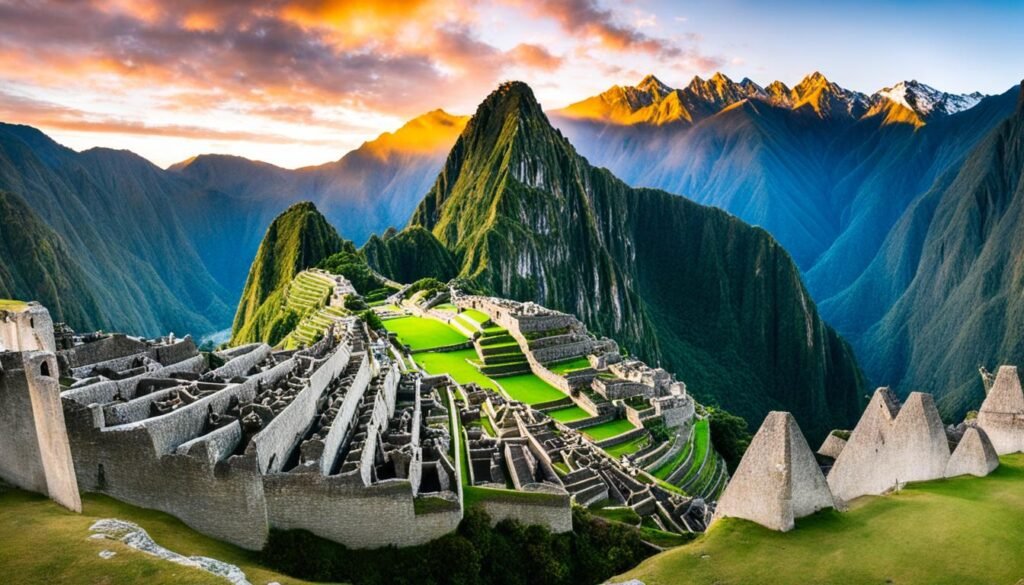
Many trails lead to Machu Picchu, including the famous Inca Trail and others. The Inca Trail takes 4 days and 3 nights to complete. But there’s also a shorter, one-day hike starting at Kilometer 104. When you reach Machu Picchu, you can see the Temple of the Sun and the Temple of the Condor. And, you’ll be surrounded by breathtaking nature.
“Machu Picchu is a true living museum, offering a window into the remarkable civilization that once thrived in this remote Andean region.”
The Vibrant Heritage of Jaipur, India
Jaipur, the capital city of India’s Rajasthan state, shines for those who love history. It’s called the “Pink City” because many buildings are pink. The city is full of rich culture that draws in people from all over.
City Palace and Amber Palace
The City Palace is at the center of Jaipur’s past. It mixes Rajput and Mughal styles in a grand way. Here, you’ll see beautiful courtyards and pavilions, and you can view royal treasures. The Amber Palace is also amazing. It sits high on a hill, showing off Jaipur’s historic and architectural skills.
Jal Mahal: The Palace in the Lake
The Jal Mahal is a real standout. It’s a palace in the Man Sagar Lake. This view lets you get really close to the fascinating architecture from a boat. This experience is truly one-of-a-kind.
Jaipur also comes alive in its markets. Places like the Johari Bazaar and Bapu Bazaar offer special textiles, jewelry, and spices. The city bursts with life, especially during events like the Jaipur Literature Festival. And you can’t miss trying the local food.
Visiting Hawa Mahal is a must. It has 953 windows and a unique look. The Jantar Mantar is another special place, showing ancient tools for studying the stars. Together, they tell the story of Jaipur’s rich culture and beauty.
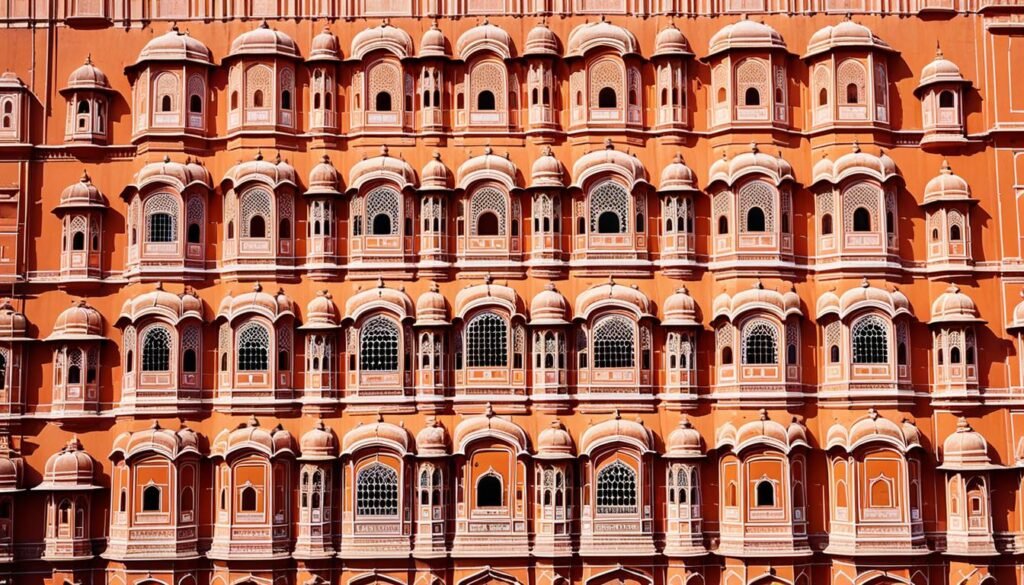
Petra: The Rose City of Jordan
Nestled in Jordan’s desert canyons, Petra is a true ancient wonder. It was the Nabatean Kingdom’s capital, dating back to 300 B.C. Carved in beautiful sandstone, its “Treasury” temple is famous. People call it “the Rose City” for its beauty. Walking through its narrow canyons lets you step back in time.
Petra’s mystery and natural beauty attract history lovers. The Street of Facades shows off 40 houses and tombs made by the Nabateans. These places hint at the luxurious lives of the ancient people.
The Nabateans built a huge Theater for 8,500 before the Romans came in the first century AD. It shows their impressive building skills. The Monastery, over 50 meters tall, and the cliff-carved tombs are also must-sees.
Exploring Petra is amazing. You can trek to Mount Aaron, the city’s holy spot. Or, visit Little Petra, only nine kilometers away. Both places are full of history and beauty.
Whether you love history, nature, or mysteries, Petra will amaze you. It’s a place that stays with everyone who visits.
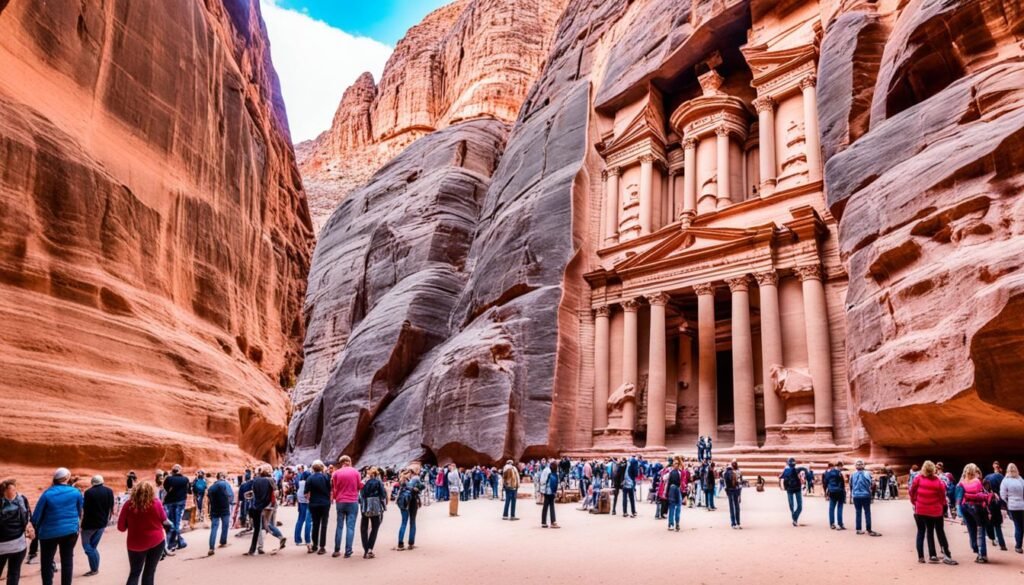
“Petra is a place where the ancient and the modern world collide, a timeless oasis that beckons the curious and the adventurous alike.”
October to March is the best time to visit Petra. Summers are very hot, making it tough to explore. A day pass costs $70 USD, or you can go for two days for $77 USD. The JETT bus fares from the 7th Circle JETT bus station to Petra are $28 USD round trip.
Visiting Petra by Night, available for $24 USD, is magical. The city’s lights by candlelight are a real treat. A full day is best to see Petra’s wonders, whether you enter through the front or back.
Petra is both a UNESCO World Heritage Site and one of the New Seven Wonders of the World. This shows its lasting value as a piece of history and culture, celebrating the Nabatean people’s achievements in a rugged desert.
Cultural destination guides for history buffs
I’ve always been drawn to learning about the past. Cultural treasures around the world fascinate me. Destinations like St. Petersburg’s Hermitage Museum and Machu Picchu offer insights into civilization’s stories.
Jaipur, India is a gem in this collection, blending history with modern living. Sites like the City Palace and Jal Mahal show us the beauty of the past. The guide to Petra in Jordan presents the Nabataean culture through unique architecture in the pink cliffs.
The Sistine Chapel is a must-see for those intrigued by Europe’s history. The frescoes by Michelangelo whisk us to the Renaissance. It’s a journey through the Catholic Church’s powerful legacy.
Travel guides take us on a global adventure. From Kyoto’s tranquil gardens to Easter Island’s mysterious statues, each place offers a unique historical journey. They are perfect for anyone who loves history.
| Destination | Historical Significance | Key Attractions |
|---|---|---|
| Pompeii, Italy | Preserved in ash after the eruption of Mount Vesuvius in 79 AD | Ruins of ancient Roman city, including homes, temples, and the Forum |
| Luxor, Egypt | Home to the sprawling Karnak complex, a temple dedicated to Amun-Ra | Karnak Temple, Valley of the Kings, Hatshepsut Temple |
| Athens, Greece | Birthplace of democracy and a center of ancient Greek civilization | Acropolis, Parthenon, Erechtheion, Temple of Athena Nike |
| Angkor Wat, Cambodia | Largest religious monument in the world, once the center of the Khmer Empire | Angkor Wat, Angkor Thom, Ta Prohm |
| Fez, Morocco | Home to the world’s oldest university, the University of al-Kairaouine | Medina of Fez, Bou Inania Madrasa, Kairaouine Mosque |
These guides can change the way we see the world. They unveil the past’s beauty and significance. Whether you love St. Petersburg or Machu Picchu, these guides will spark your history passion and start your own adventure.
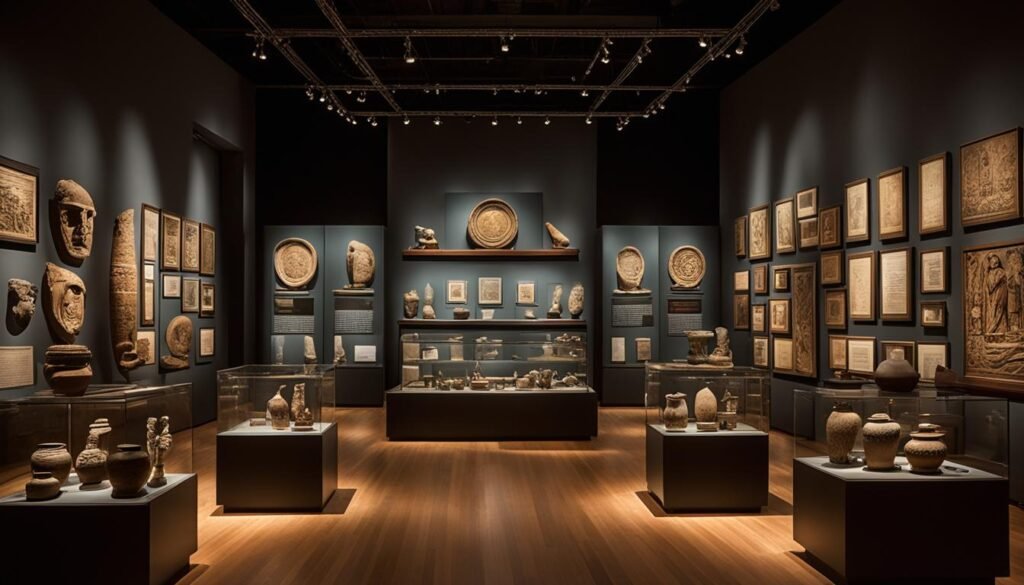
The Sistine Chapel: Papal Splendor in Vatican City
The Vatican City is a world of historical and cultural marvels. At its core, the Sistine Chapel shines as a breathtaking symbol. It was ordered by Pope Sixtus IV in the 15th century. The chapel is famous for its stunning frescoes, including Michelangelo’s famous ceiling painting.
For centuries, the Sistine Chapel has been vital in religious and cultural scenes. It hosts papal events and the selection of new popes. This deepens its importance as a space intertwined with faith and tradition.
Michelangelo’s work, painted from 1508 to 1512, tells essential biblical stories. He used a unique fresco technique, showing his unmatched talent. These paintings are just part of what makes the Sistine Chapel valuable. The Vatican and all its wonders, including the Sistine Chapel, are estimated to be worth billions. This highlights their massive historical and cultural significance.
“Michelangelo finished the detailed frescoes on the Sistine Chapel’s ceiling in just four years from 1508 to 1512, highlighting his immense talent and the Renaissance era’s spirit.”
Experiencing the Sistine Chapel is profound. It connects visitors with papal and art history in a timeless way. It’s a must-see site for anyone interested in art and history. Even for those just curious, the Chapel offers a truly moving experience. It leaves a deep impression on everyone who enters.
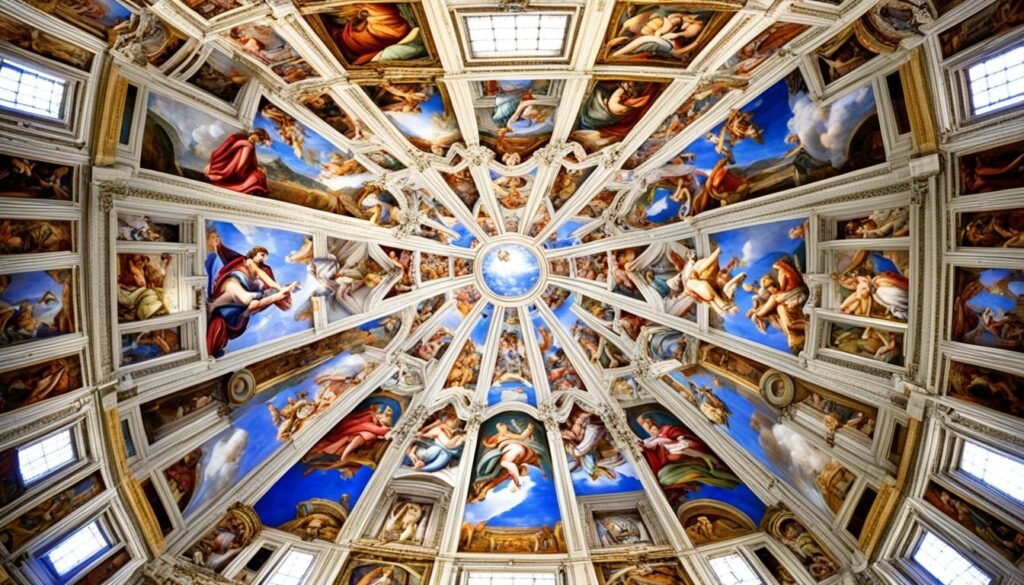
Kyoto: Japan’s Ancient Capital
Kyoto, the former imperial capital of Japan, is full of historical and cultural treasures. It’s known for its classical Buddhist temples like the Kinkakuji and Kiyomizudera. These places give a special view into Japan’s spiritual past. Kyoto also boasts grand palaces from past shogun eras, such as the Nijo Castle and the Kyoto Imperial Palace.
But Kyoto is not just about its history. Its Bamboo Gardens are a peaceful spot. The gentle bamboos sway in the wind, taking visitors back in time. Travelers can really feel Japan’s vibrant history by visiting these sites.
Buddhist Temples and Imperial Palaces
Kyoto shines with its many Buddhist temples and palaces. The Kinkakuji is a Golden Pavilion covered with gold leaf. The Kiyomizudera temple has a famous wooden veranda with amazing city views. The Nijo Castle and Kyoto Imperial Palace show Japan’s grand past, both feudal and imperial.
The Serene Bamboo Gardens
A walk in Kyoto’s Bamboo Gardens in Arashiyama is a must. As you walk among the tall bamboos, a deeply calming feeling surrounds you. This beauty and peace lets visitors connect with nature and time. Whether you walk or ride a rickshaw, the garden’s magic enchants.
Exploring Kyoto’s cultural and historical sites deepens your love for Japan’s history. You learn about its rich heritage from ancient times, making your visit unforgettable.
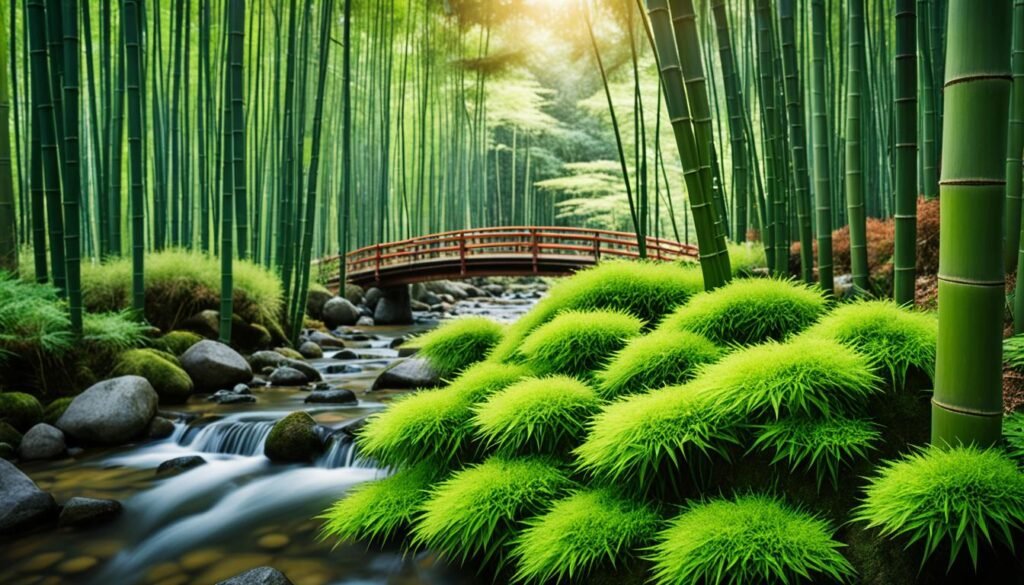
| Kyoto Landmark | Significance | Year Established |
|---|---|---|
| Kinkakuji (Golden Pavilion) | Iconic Buddhist temple covered in gold leaf | 1397 |
| Kiyomizudera | Wooden temple with panoramic city views | 780 |
| Nijo Castle | Magnificent feudal castle built by the Tokugawa shogunate | 1603 |
| Kyoto Imperial Palace | Former residence of Japan’s imperial family | 794 |
| Arashiyama Bamboo Grove | Serene bamboo forest in the Kyoto suburbs | N/A |
“Kyoto is the soul of Japan. It’s the place where the heart of the culture beats.” – Alex Kerr, author and scholar
Easter Island: Exploring Moai Mysteries
Easter Island, known locally as Rapa Nui, is in the vast Pacific Ocean. It’s about 2,182 miles from Chile. This island is famous for its big moai statues, which are its iconic feature.
Even though it’s small, only 24.6 square kilometers, it’s filled with history. There are about 1,000 moai statues on the island. They tell tales of the Rapa Nui people and their Polynesian roots.
The Sebastian Englert Museum is a top spot to learn more. It holds over 15,000 artifacts. These items give a close look at the Rapa Nui’s life and traditions.
Visiting the moai sites is a must for many. The entrance ticket costs $80 for adults and $40 for kids 7-12. Children under 7 get in free. With the ticket, you can visit these wonders for 10 days.
| Attraction | Cost |
|---|---|
| Easter Island National Park Entrance Ticket | $80 USD / 54,000 CH Peso |
| Father Sebastian Englert Anthropological Museum Admission | $2.00 USD |
| Tongariki Site Taxi Service | 20,000 Pesos per person |
| Mountain Bike Rental | 8,000 Pesos per day ($12.00 USD) |
| Car Rental | $80.00 USD per day, without insurance |
| Puna Pau Quarry Restroom Use | $1.00 USD |
| Ahu Akivi Restroom Use | $1.00 USD |
Besides the moai, the island has a vibrant Polynesian culture. Local dances like Sau Sau are still performed. The island’s roughly 7,000 people are mostly descendants of the Rapa Nui. This makes Easter Island a live history exhibit.
If you love history or exploring new cultures, Easter Island is a dream. The moai statues are awe-inspiring. The local culture and customs are welcoming. This island offers an unforgettable trip of a lifetime.
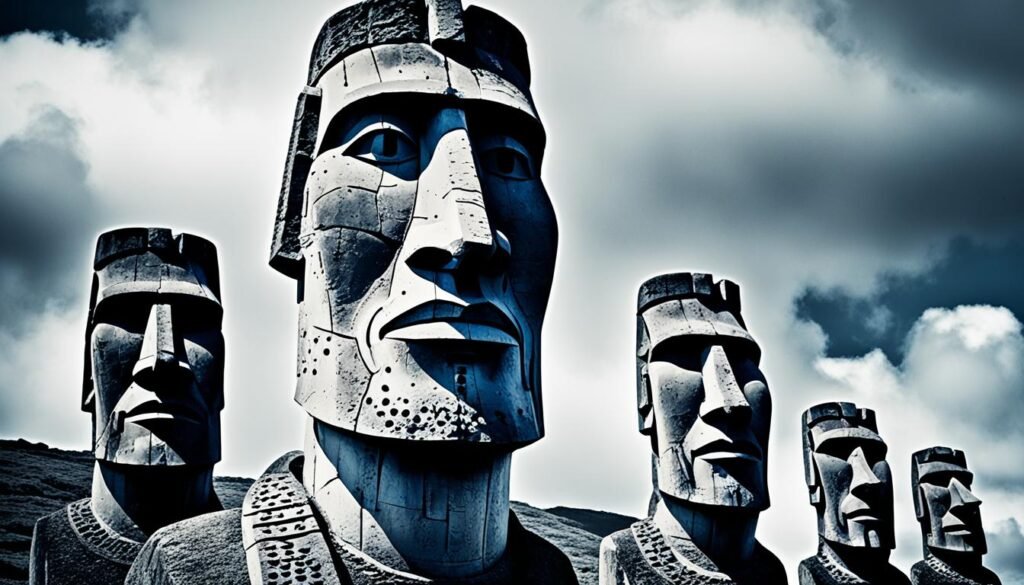
“The Moai of Easter Island are a true wonder of the world, standing as silent guardians of a lost civilization that continues to captivate and inspire travelers from around the globe.”
Egypt: Cradle of Ancient Civilizations
Egypt is known worldwide as a key place where civilization started. Situated by the beautiful Nile River, it was a powerful scene for over 3,000 years. Here, local rulers and foreign leaders played their parts in the country’s story.
The Pyramids of Giza and Luxor‘s grand sites show Egypt’s rich history. These sites offer a clear link to the past. Visitors get to witness the grandeur of the Pharaohs and the influence of the Hellenistic world.
Egypt is a unique mix of different cultures. Its complex history makes it irresistible for those who love history. It is still a favorite spot for many global travelers because of its archaeological wonders.
- The Pyramids of Giza and the Sphinx are the last of the Seven Wonders of the Ancient World still standing.
- The Egyptian Museum in Cairo houses an unbeatable collection of ancient Egyptian items.
- Luxor is often called the best open-air museum globally. It includes the impressive Karnak Temple Complex and the peaceful Valley of the Kings.
- The Abu Simbel temples, near the Sudanese border, showcase ancient Egyptian engineering prowess.
- The Bibliotheca Alexandrina in Alexandria is a modern take on the ancient Library of Alexandria. It was once a place full of learning in the ancient world.
Egypt’s cultural heritage and archaeological wonders attract history lovers. The opening of the Grand Egyptian Museum in 2024 will provide a unique chance to dive into this ancient culture. It will allow visitors to fully experience the legacy of the Pharaohs.
“Egypt is not a country we live in, but a country that lives within us.” – Egyptologist Micheal Hoffman
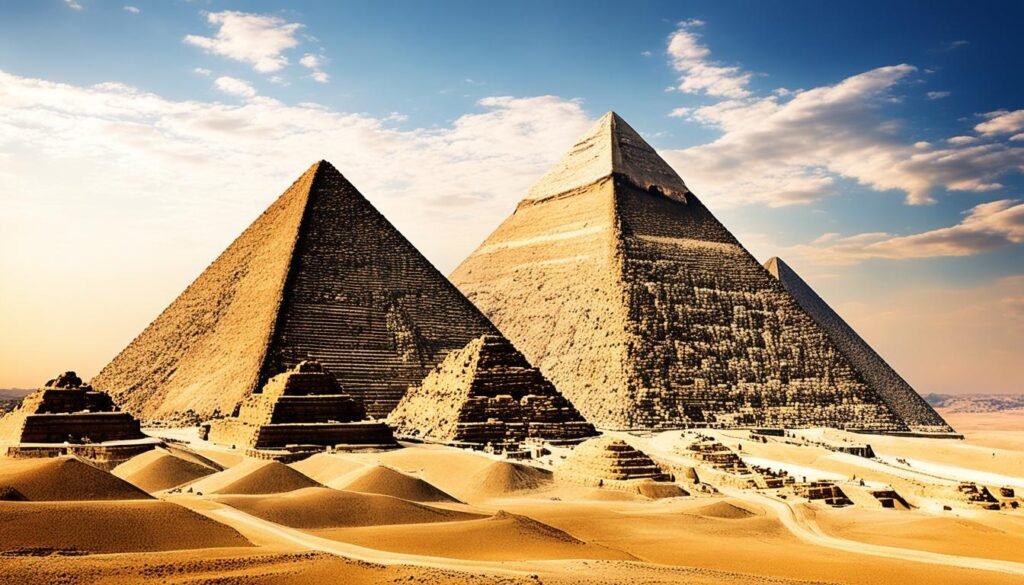
From the amazing Pyramids of Giza to the secrets of the Nile River, Egypt is a place of wonder and rich culture. It is a journey through time that will stay with you forever.
Conclusion
This detailed collection of cultural destination guides for history buffs has shown you the world’s most interesting historical sites and landmarks. You’ve seen St. Petersburg’s royal beauty and Machu Picchu’s ancient mystery. Also, the colorful heritage of Jaipur and Kyoto’s peaceful landscapes. These guides illuminate our shared human story.
Visiting these cultural heritage spots lets you dive into the past. You discover both hidden treasures and famous preserved landmarks, making history vivid. Whether it’s the divine Sistine Chapel or Easter Island’s unique moai, these travel narratives truly spark your love for history. They encourage you to explore your own ancestral legacies and immersive experiences.
Keep peeling back history’s layers through these archival discoveries and living museums. Let your love for historical exploration keep growing. Take the lessons from these cultural destination guides for history buffs with you. They can lead you on an incredible journey of exploration.
FAQ
What types of cultural destinations are covered in the guides?
How do the guides help history enthusiasts immerse themselves in the past?
What are some of the key historical sites featured in the guides?
How do the guides inspire readers to embark on their own cultural odysseys?
What types of immersive experiences do the guides highlight?
Source Links
- https://www.moon.com/travel/gifts-for-history-buffs/
- https://www.goway.com/inspiration/10-best-countries-history-buffs
- https://www.tnvacation.com/articles/ultimate-tennessee-road-trip-history-buffs
- https://www.nathab.com/blog/st-petersburg/
- https://experiencingtheglobe.com/travel-to-saint-petersburg-russia/
- https://gotraveltipster.com/saint-petersburg-travel-guide/
- https://www.encounterstravel.com/blog/machu-picchu
- https://www.kuodatravel.com/blog/machu-picchu-travel-guide/
- https://www.adventure-life.com/peru/machu-picchu/articles/10-most-extraordinary-ruins-to-explore-at-machu-picchu
- https://globeaware.org/news/globe-aware-news/1695-explore-jaipur-the-pink-city-of-india
- https://travel.india.com/guide/destination/jaipur-city-exploring-the-rich-heritage-and-vibrant-culture-6807709/
- https://zeezest.com/travel/10-heritage-walks-in-india-for-the-history-buff-in-you-4060
- https://www.kimkim.com/c/the-ultimate-guide-to-petra
- https://www.onenationtravel.com/how-to-visit-petra-in-jordan/
- https://greenwithrenvy.com/inside-petra-jordan/
- https://www.originaltravel.co.uk/travel-blog/best-places-to-visit-for-history-buffs
- https://www.thetravel.com/destinations-history-lovers-visit/
- https://worldofwanderlust.com/the-complete-travel-bucket-list-for-history-buffs/
- https://www.romaexperience.com/post/sistine-chapel
- https://www.romaexperience.com/discover-italy/visitingthevatican
- https://etichotels.com/journal/10-things-to-know-about-sistine-chapel/
- https://japanfans.nl/en/a-history-lovers-guide-to-kyoto/
- https://itravelforthestars.com/kyoto-travel-guide/
- https://www.adventure-life.com/japan/articles/the-ultimate-guide-to-cultural-exploration-in-kyoto-japan
- https://www.setours.com/easter-island-how-to-explore-it-3-days/
- https://journeyswithsonia.com/easter-island-and-the-mystery-of-the-moai/
- https://www.justapack.com/exploring-easter-island/
- https://travel2egypt.org/historical-egypt-travel/
- https://www.thiscityknows.com/travel-guide-egypt-best-places-to-travel/
- https://www.linkedin.com/pulse/journey-through-time-egypt-tour-packages-ancient-osama-rashad-u8ahf?trk=public_post
- https://savannahlakesrvresort.com/best-colonial-history-tours-in-savannah-a-must-do-for-history-buffs/
- https://www.moneycontrol.com/news/trends/travel/5-best-places-to-visit-in-the-world-for-history-buffs-12391581.html
- https://www.greatestmoves.com/blog/exploring-maryland-a-comprehensive-guide-to-its-rich-history-culture-and-attractions/


